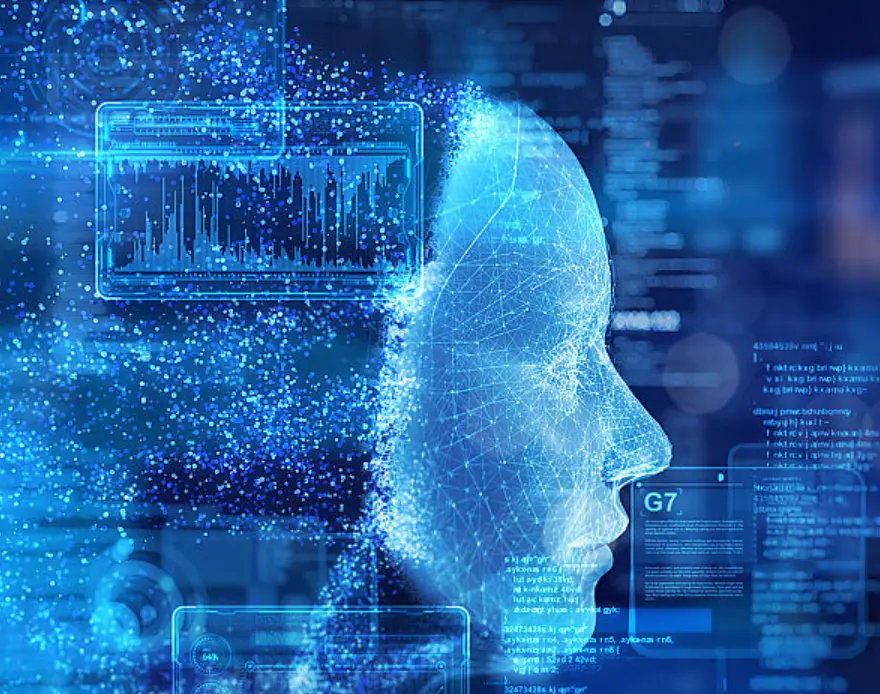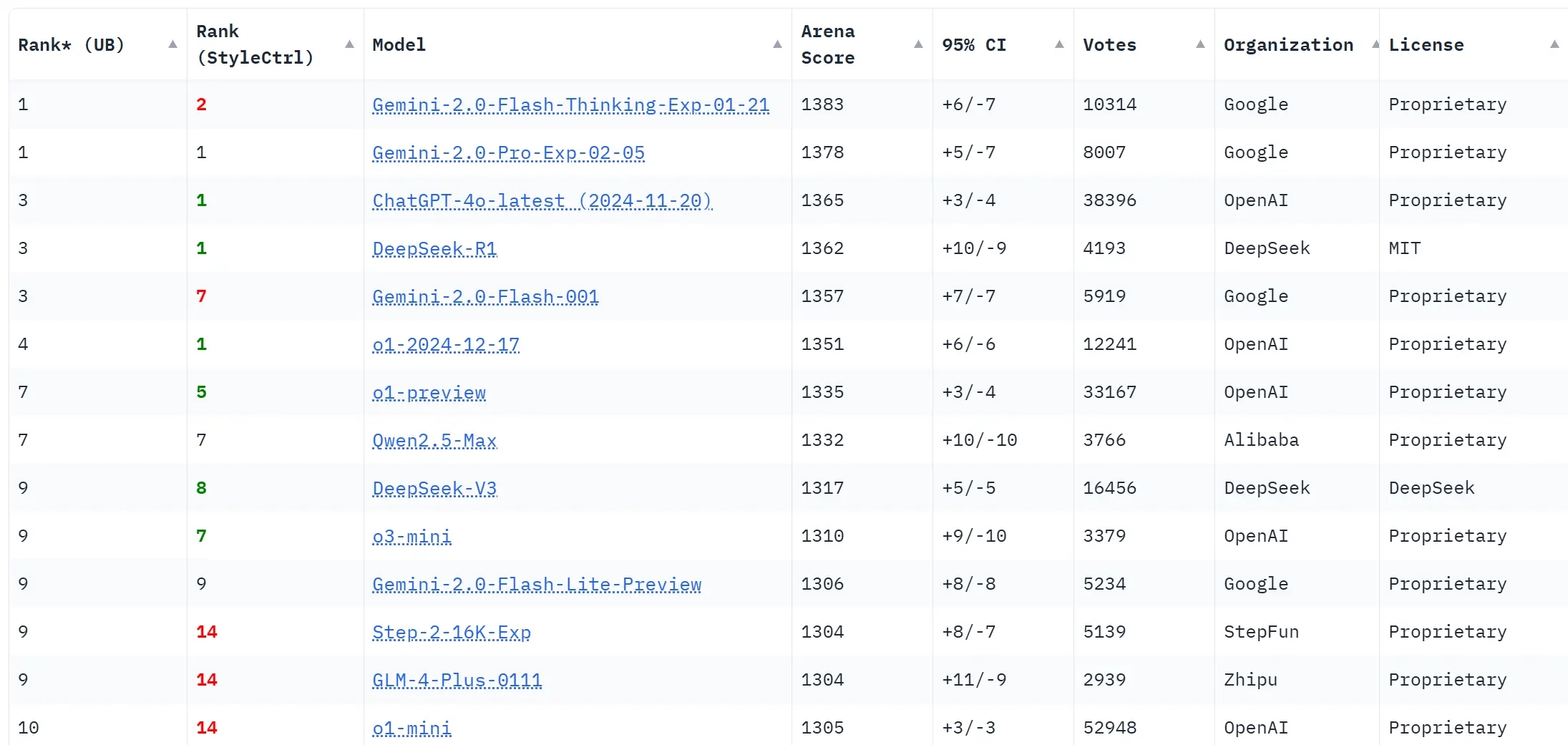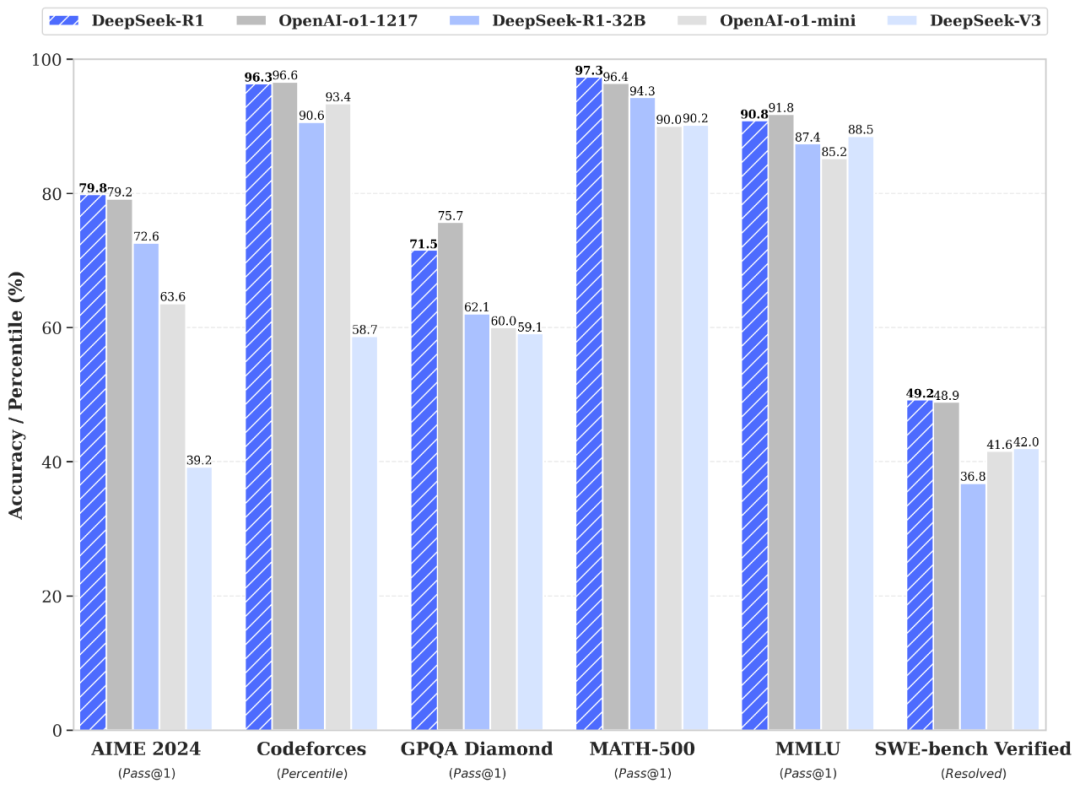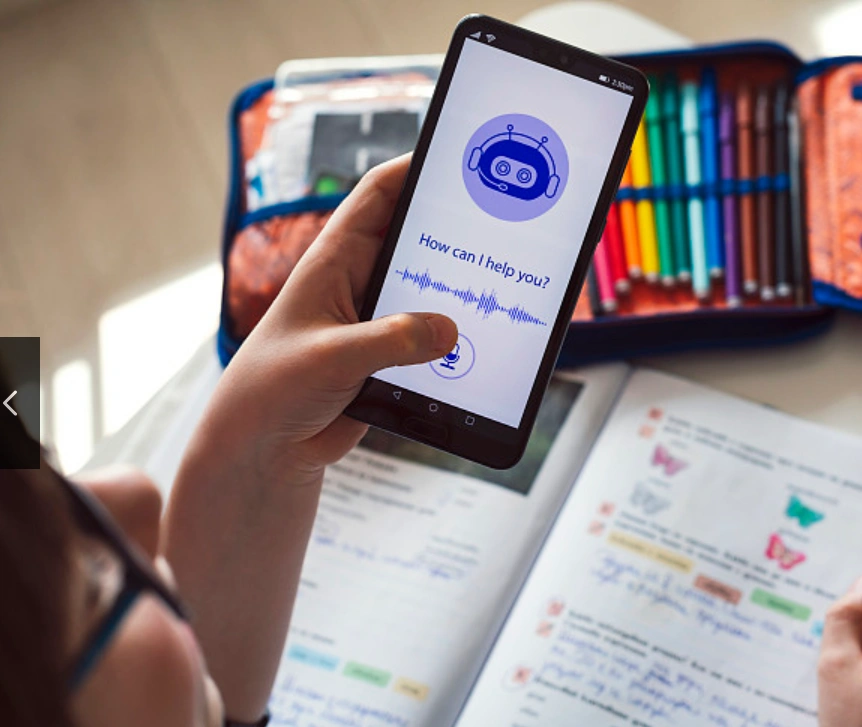In recent years, artificial intelligence (AI) has rapidly advanced and permeated various aspects of our lives, offering innovative solutions that were once considered science fiction. Among these, AI-powered assistive technologies for low-vision individuals have emerged as a transformative force. By harnessing the power of smart chatbots, image optimization, and multi-modal devices, these innovations are redefining the way low-vision users access information, navigate their environments, and express themselves.
 1: AI Chatbot Systems and LMArena Ranking Analysis
1: AI Chatbot Systems and LMArena Ranking Analysis
1.1 The LMArena Leaderboard and the Rise of DeepSeek
AI chatbot systems powered by large language models (LLMs) have revolutionized how users interact with technology, especially for those with low vision. These systems bypass traditional graphical user interfaces, offering seamless voice-based interactions that enable information retrieval, schedule management, navigation assistance, and more.
According to the latest data hosted on the Chatbot Arena Leaderboard by Hugging Face (2024), the global landscape of AI chatbots is witnessing fierce competition among several cutting-edge models. Among these, the new entrant DeepSeek has emerged with impressive reasoning capabilities and optimized resource consumption. Although DeepSeek is rapidly gaining traction, established models like ChatGPT, Gemini, and other products from OpenAI continue to dominate due to their extensive knowledge bases, superior natural language understanding, and rapid response times. These trends underscore the fact that, despite the rising influence of innovative models, the U.S. market remains at the forefront of deploying and refining these technologies (VentureBeat, 2023).
Source: LM Arena (2025)(Retrieved February 9, 2025, from https://lmarena.ai/?leaderboard)
1.2 Practical Benefits of Chatbot Systems for Low-Vision Users
For low-vision individuals, conventional interfaces that rely heavily on visual cues can present significant challenges. In contrast, AI-powered voice interaction systems offer a more accessible and natural mode of communication. With advanced speech recognition and text-to-speech capabilities, these systems allow users to interact with technology through simple verbal commands. This eliminates the need for visual input and reduces the cognitive load associated with navigating complex interfaces.
Some key benefits include:
- Information Access and Schedule Management: Low-vision users can ask for weather updates, news, and appointment reminders without struggling with small fonts or unclear images.
- Smart Home Integration: Voice commands can control smart devices—such as lighting, thermostats, and appliances—enabling users to manage their home environments independently.
- Remote Health Consultation: AI chatbots facilitate remote medical consultations by interpreting user queries and providing instant, reliable information on health and wellness topics.
This approach not only enhances usability but also significantly boosts the independence and confidence of low-vision users (VentureBeat, 2023).
1.3 Competitive Landscape: DeepSeek Versus ChatGPT, Gemini, and OpenAI
The competitive dynamics among AI chatbots are shaping the future of assistive technology. On the one hand, DeepSeek is notable for its efficient inference and resource optimization, making it particularly well-suited for specialized tasks that require high-precision responses. On the other hand, ChatGPT—a flagship product developed by OpenAI—leverages its massive training dataset and sophisticated language generation capabilities to deliver natural, context-aware conversations. Meanwhile, models such as Gemini maintain their lead through rapid processing speeds and advanced semantic comprehension, ensuring a smooth and coherent dialogue even in complex scenarios.
These models not only compete on technical merits but also influence market trends in the United States and globally. The robust performance of American-developed systems—like ChatGPT and Gemini—continues to set the benchmark, driving further innovation and integration of assistive AI into everyday life (VentureBeat, 2023).
1.4 Global Trends and Future Prospects in AI-Driven Assistive Technologies
The current trajectory of AI chatbot systems is highly encouraging. With ongoing improvements in algorithms and hardware capabilities, future models are expected to deliver even faster responses, more accurate language comprehension, and enhanced multi-modal integration. This progress is particularly beneficial for low-vision users, who stand to gain from increasingly personalized and responsive assistive technologies.
The convergence of various AI technologies promises a future where chatbots not only handle routine inquiries but also facilitate complex decision-making and real-time problem-solving. As the U.S. continues to lead in technological innovation, the global market will likely witness a further democratization of access, ensuring that assistive devices become more affordable and widely available (VentureBeat, 2023).
2: The Role of Drawing AI Tools in Visual Accessibility
2.1 Advancements in Drawing AI Technology
In parallel with the evolution of chatbot systems, drawing AI tools have also made significant strides. Powered by deep learning and generative adversarial networks (GANs), these tools can convert textual descriptions or rough sketches into detailed images. While primarily celebrated for their applications in digital art and creative design, these tools also offer substantial benefits for low-vision users by generating images that are optimized for clarity and contrast.
2.2 Image Optimization and Visual Reconstruction
One of the primary challenges for low-vision users is the difficulty in discerning details in standard images due to low contrast and insufficient clarity. Drawing AI tools can automatically enhance images by adjusting color saturation, refining edge details, and reducing background noise. The resulting images are not only more visually accessible but also provide a more intuitive understanding of the content, whether it be a diagram, a piece of artwork, or a photograph. Such enhancements are crucial in educational and professional settings, where clear visual information is paramount (TechCrunch, 2023).
2.3 Enabling Artistic Expression and Emotional Connection
Art serves as a universal medium for expressing emotions and ideas. For low-vision individuals, traditional visual art might seem out of reach. However, with the advent of drawing AI tools, these users can both appreciate and create art in new ways. By using voice commands or tactile inputs to guide the creative process, low-vision users can generate artworks that are optimized for enhanced visual perception. This not only enriches their cultural experience but also empowers them to participate in creative endeavors, fostering a deeper sense of inclusion and self-expression (TechCrunch, 2023).
3: Other AI Tools and Future Trends in Assistive Technology
3.1 Multi-Modal Devices and Smart Navigation
Beyond chatbots and drawing AI, multi-modal smart devices play an integral role in modern assistive technology. Products such as smart glasses, wearable navigation aids, and portable smart readers combine AI-powered speech recognition, image processing, and augmented reality to provide comprehensive support. These devices assist low-vision users by offering real-time environmental analysis, obstacle detection, and navigation guidance, making everyday tasks safer and more manageable (The Verge, 2023).
3.2 Enhancing Information Access Through Smart Reading
The evolution of text-to-speech and natural language processing has also revolutionized how low-vision individuals consume written content. Modern smart reading devices convert printed text and digital content into high-quality audio, facilitating seamless access to information. Moreover, advanced summarization algorithms and key-point extraction further enhance the user experience by condensing lengthy documents into digestible formats. This innovation not only improves accessibility in educational and professional contexts but also promotes lifelong learning and engagement (The Verge, 2023).
3.3 Fusing Cutting-Edge Technologies for Future Innovations
Looking forward, the integration of deep learning, computer vision, speech processing, and augmented reality will lead to even more sophisticated assistive devices. A particularly promising area is the development of brain-computer interfaces (BCIs), which, although still in early stages, have the potential to revolutionize assistive technology. BCIs could enable direct communication between the human brain and assistive devices, bypassing traditional sensory pathways altogether (Zoomax, 2024). Read this article. While this technology remains experimental, its eventual application could provide unprecedented levels of support for low-vision individuals, opening new frontiers in accessibility and independence.
Conclusion
The rapid evolution of artificial intelligence is reshaping the landscape of assistive technology for low-vision individuals.
Through innovative chatbot systems—exemplified by emerging models like DeepSeek alongside industry stalwarts such as ChatGPT, Gemini, and other OpenAI products—low-vision users are gaining unprecedented access to information and interactive support. Simultaneously, drawing AI tools and other smart devices are enhancing visual clarity and overall accessibility. As these technologies continue to converge and evolve, the future promises even more advanced, integrated solutions that will empower low-vision individuals to live more independently and engage more fully with the world around them.
FAQ
Q1: How does AI improve the quality of life for low-vision individuals?
A1: AI technologies such as smart chatbots, optimized image tools, and multi-modal devices enable low-vision users to access information, navigate their environments, and manage daily tasks independently.
Q2: What are the advantages of DeepSeek compared to ChatGPT, Gemini, and other OpenAI models?
A2: DeepSeek offers efficient reasoning and optimized resource consumption, making it ideal for specialized tasks, while ChatGPT, Gemini, and similar models excel in natural language understanding and rapid responses, particularly in complex conversational contexts.
Q3: How can drawing AI tools enhance visual accessibility for low-vision users?
A3: Drawing AI tools can adjust image contrast, enhance details, and simplify backgrounds, creating clearer visual content that low-vision users can interpret more easily, thereby improving their overall visual experience.
Q4: What future technologies are likely to further revolutionize assistive devices for low-vision individuals?
A4: In addition to current speech and image processing technologies, advances in augmented reality, smart navigation, and brain-computer interfaces (BCIs) hold significant promise for creating more advanced and integrated assistive solutions.
Q5: How should low-vision users choose the right assistive tool?
A5: Users should consider factors such as functionality, ease of use, technical support, and market feedback, and keep abreast of the latest international rankings and reviews to select the most suitable product.
References
Hugging Face. (2024). Chatbot Arena Leaderboard. Retrieved from https://huggingface.co/spaces/lmarena-ai/chatbot-arena-leaderboard
TechCrunch. (2023). The rise of drawing AI tools in creative industries. Retrieved from https://techcrunch.com
The Verge. (2023). How smart devices are transforming accessibility for the visually impaired. Retrieved from https://www.theverge.com
VentureBeat. (2023). The global AI chatbot showdown: ChatGPT and Gemini reshape the market. Retrieved from https://venturebeat.com
LM Arena. (2025, February 9). Leaderboard [Data set]. Retrieved February 9, 2025, from https://lmarena.ai/?leaderboard
Zoomax. (2024). Research on brain-computer interface technology is rapidly advancing. Retrieved from https://zoomax.com/research-on-brain-computer-interface-technology-is-rapidly-advancing/




